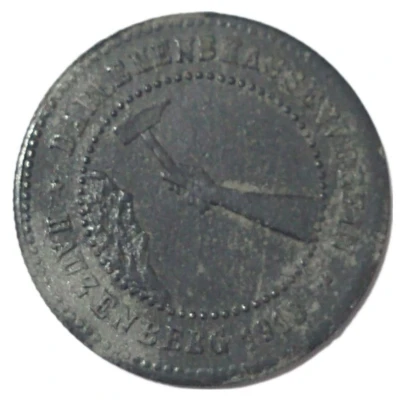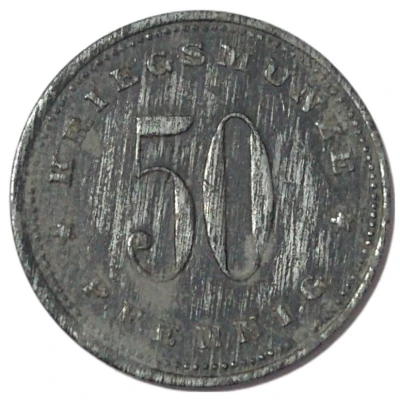


Obverse © @Adilson
50 Pfennigs - Hauzenberg
1918 year| Zinc | 3.0 g | 24 mm |
| Issuer | City of Hauzenberg (Federal state of Bavaria) |
|---|---|
| Emperor | William II (Wilhelm II) (1888-1918) |
| Period | Weimar Republic (1918-1933) |
| Type | Standard circulation coin |
| Year | 1918 |
| Value | 50 Pfennigs (50 Pfennige) (0.50) |
| Currency | Mark (1914-1924) |
| Composition | Zinc |
| Weight | 3.0 g |
| Diameter | 24 mm |
| Shape | Round |
| Technique | Milled |
| Orientation | Medal alignment ↑↑ |
| Demonetized | Yes |
| Updated | 2024-10-04 |
| Numista | N#398781 |
|---|---|
| Rarity index | 95% |
Reverse
Beaded rim, legend surrounding denomination centered.
Script: Latin
Lettering:
KRIEGSMÜNZE
50
✠ PFENNIG ✠
Edge
Serrated
Interesting fact
One interesting fact about the 50 Pfennigs - Hauzenberg 1918 coin is that it was issued during a time of economic turmoil in Germany, known as the "Inflationary Period" (1914-1923). During this time, the value of the German mark (the national currency) dropped significantly, leading to a period of hyperinflation. As a result, many Germans turned to alternative forms of currency, such as local Notgeld (emergency money) and foreign currencies. The 50 Pfennigs - Hauzenberg 1918 coin, made of zinc and weighing 3.0 grams, was one of the many different types of Notgeld issued during this time. Despite its face value of 50 pfennigs, the coin's actual value was much higher due to the scarcity of metal coins and the high demand for alternative currencies. Today, this coin is a rare and valuable collector's item, serving as a reminder of a unique period in German history.